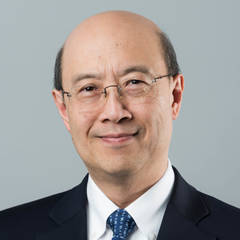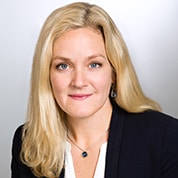
During a four-week stretch in February and March, the combination of pandemic, politics and related economic fallout caused the Cboe Volatility Index (VIX) to spike by a historic 475%, from 14.38 to 82.69. What was an investment strategist to do? And how might that experience affect portfolio strategies when markets swing wildly in the future?
With 10-year Treasuries at about 60 basis points, some fund managers say investors can no longer depend on fixed income to offset the risk of investing in equities. The solution, they say, is investing in options on equity indexes like the Standard & Poor's 500, which fell 33.67% from February 20 to March 23, while the VIX was spiking. Another idea is options on the VIX, which is a measure of anticipated near-term volatility as expressed by option prices for the S&P 500.

Among these fund managers is Paul Britton, CEO of Capstone Investment Advisors in New York, which runs a family of hedge funds that invest in options on both the S&P and the VIX. Britton posited in an interview that Modern Portfolio Theory (MPT), the work that brought Harry Markowitz the Nobel Prize in economics, has been rendered obsolete by quantitative easing.
“If we go back in history and look at the Markowitz theory that was created in the 1950s and '60s,” Britton said, the common portfolio construction of “60% in equities and 40% in bonds to build a balanced portfolio, secure a healthy retirement, and be able to save over a number of years worked brilliantly.”
“With Treasury rates at 60 basis points,” Britton went on, “the utility function of the portfolio is now useless. It's not going to pay me any money, and it's not going to balance out my equity losses because, simply, there's no juice left in the lemon. It's all squeezed out.”
Hamilton Reiner, head of U.S. equity derivatives at J.P. Morgan Asset Management, agrees: “Maybe Modern Portfolio Theory means that heavily correlated assets can only get you so much when you're down to zero by the Fed.”
Markowitz Weighs In
What does Markowitz, who turned 93 in August, say about such revisionist thinking?
“I don't touch option strategies,” the Chicago-born economist, also winner of the Von Neumann Prize in Operations Research Theory, said in an email exchange. “As a friend of mine used to say, 'They are the kind of thing where you win a little, win a little, etc., and then lose a lot.'”
One options fund that has gained a little and lost - if not a lot - in recent months is Britton's flagship Capstone Volatility Fund, which invests in equity options and gained 1.04% between January and April, according to Backstop Solutions Group's BarclayHedge. The fund, which has $3.27 billion in assets, actually lost 0.58% between February and April.

Meanwhile, the Arkansas Teacher Retirement System sued Allianz Global Investors for losing at least $774 million in February and March, allegedly exacerbating the losses by trying to “trade S&P 500 Index options in order to drive down the settlement price of VIX futures” two days after the index spiked on March 16, according to the complaint filed July 21 in U.S. District Court for the Southern District of New York. Allianz stands accused of “imprudence and disastrous risk management,” instead of providing “adequate hedging to protect against market downturns.”
Using the Efficient Frontier
Markowitz did suggest that his research may be misunderstood in the current environment.
“I do not recommend a 60-40 mix as a universal prescription,” he explained. “Clearly, the point on an 'efficient frontier' which best suits an aging widow would typically not be the one best for an aggressive entrepreneur.” As formulated in 1952, “efficient frontier” refers to the boundary between assets for which the return is potentially greater than the risk of investing in them and those for which the return is likely to be lower than the risk.
“That is why MPT presents the investor with a tradeoff curve rather than one universally best portfolio,” Markowitz said. The tradeoff curve refers to the level of risk that an investment incurs relative to the level of return. In other words, the lower the risk, the lower the return - and vice versa.
“Just pick a risk-return combination from the efficient frontier,” Markowitz said. “You have to decide which securities or asset classes will be your 'universe,' make forward-looking estimates of means, variance and covariances, generate a frontier, and pick from the frontier. You can use some kind of factor model instead of estimating individual covariances, etc.”
Even without a factor model or individual covariances, Markowitz's “aging widow” analogy has held up pretty well in 2020.
The BlackRock 60/40 Target Allocation Fund (ticker: BIGPX) was up 4.34% from January 1 to August 12. This fund of funds, with 60% of its $875 million in equities and 40% in bonds, beat the S&P 500 as the benchmark reached a zenith in August. The S&P was up 3.55% in that span.
At an even more conservative point on the efficient frontier, another strategy that is beating the S&P is the Vanguard 30% Stock/70% Bond Portfolio. Offered to 529 college savings plan investors, the portfolio gained 4.28% in the first seven months of 2020.
Historical Precedent?
The backdrop to the debate over the safest and most efficient ways to manage volatility in financial markets is a mad scramble among investors to survive the pandemic - at least financially. If a consensus is in sight, it is that no previous market shock, not even the flu pandemic of 1918, has provided a clear-cut lesson.
Simply put, it's different this time.
Currently, asset values are more likely to be dictated by national politics than any known metric, according to MIT Sloan School of Management finance professor Andrew Lo. He describes government relief and stimulus measures as “spending trillions dealing with the symptoms, not the disease.” He also cites the high-level wrangling over public health policy in Washington, including President Donald Trump's sparring with Anthony Fauci, director of the National Institute of Allergy and Infectious Diseases.
“The worst is not over,” says Lo. “If Fauci is fired, the market will fall. I'm referring to a second wave of market collapse.”
In other words, stock market volatility is ultimately driven from the Oval Office. “We need to deal with COVID-19 and have a credible plan. Then we will see markets developing relatively quickly,” Lo adds.
The political stakes are so high as to more closely resemble the market crash following the terrorist attacks of September 11, 2001. The reason, Lo says, is that investors were immediately armed with information, from the moment the hijacked airliners crashed, to make decisions in real time. With COVID-19, incremental progress of the disease is on the internet and social networks with no time lag. In both cases, the result was a reasonably well-informed selloff.
Accelerating Information
In contrast, the so-called Spanish flu 102 years ago was “a misnomer,” Lo explains. Considerable time lapsed between the pandemic's spread across Europe and market awareness of it. After millions of people had died, equity investors were reduced to trend-following: They sold stocks that were viewed as too expensive, and predictably returned to buying when prices were seen to be affordable.

This time around, investors have the luxury of algorithms and derivatives. Nevertheless, managers of funds that invest in options and derivatives are having difficulty coping with the volatility through which the stock market has been undulating since late February.
A SIFMA Insights report on markets' resilience during “the 2020 market madness” pointed out that “the Dow [Jones Industrial Average] experienced single-day market moves at a more significant level than during the global financial crisis [GFC].” By the time of that August report, there were 20 intraday swings in that index of 1,000+ points (high minus low price), versus one in the GFC. For the S&P 500, there were 23 such 100+ intraday price swings, also compared with one in the earlier crisis.
Reiner manages the JPMorgan Hedged Equity Fund (JHQRX), with $532 million in assets, following what he describes as an enhanced index strategy with an options overlay. He designed the fund to cover the cost of its own hedging and still turn a profit. At the beginning of every quarter, Reiner buys European options on the S&P 500, which cannot be exercised early. The options are traded on an exchange, which eliminates counterparty risk, and they are marked to market.
“When I put on those hedges, I put a downside hedge on, and then I sell an out-of-the-money call to pay for it. Theoretically, my cost is nearly zero,” Reiner says.
The fund's hedges can also generate a return, which helps mitigate losses. During the quarter ended March 31, when the market was down 19.60%, the fund lost 4.93%. Reiner estimates that the hedges contributed a return of nearly 15%.
Since then, the fund has recovered, gaining 6.31% during the first seven months of the year, according to Morningstar, outpacing the S&P 500. Still, the fund is barely keeping pace with Morningstar's model portfolio of 60% bonds and 40% equities, which would have gained 6.07% during that period, even at such a low-risk point on the tradeoff curve.
Volatility Shocks
In addition to options strategies, managed futures funds, which shift between asset classes, were expected to perform well in market mayhem.
“In short, futures contracts focus explicitly on the level of the implied volatility, which is more of a pure play on the volatility,” says Kathryn Kaminski, chief research strategist at AlphaSimplex Group in Cambridge, Massachusetts. “Options are not an exact exposure in volatility. They are more complex to price, and there are many things which impact the value of them.”
AlphaSimplex, of which Lo is founder and chairman emeritus, is known for a managed futures strategy that typically shifts between long bonds, short equity, and commodities, depending on risk levels. However, the AlphaSimplex Global Alternatives fund (GAFYX) was down 9.6% from January 1 to August 12.
Kaminski says the fund operates without human decision-making, moving out of higher-risk and into lower-risk asset classes at any given time. The investment process is completely automated because such risks are difficult for humans to process rationally, she says.
“I am not jealous in any way of discretionary managers who have to think about 'what does this mean?' and 'where are we going?'” she adds.
By mid-April, the algorithms running the AlphaSimplex fund had lowered its weight in stocks and increased commodities. The oil selloff, which caused U.S. oil futures to fall below zero in April, was “very additive” to the portfolios of managed futures funds that are “taking advantage of that extended weakness in that commodity,” says Tayfun Icten, director of fund research at Mesirow Financial in Chicago. But it was apparently not additive enough to prop up AlphaSimplex's performance.
A New Derivative
AlphaSimplex is not alone in looking at futures to hedge against the volatility unleashed by COVID-19. On August 13, CME Group in Chicago announced that it would start offering futures contracts on the Nasdaq-100 Volatility Index (VOLQ) in October, pending the approval of regulators.

This is an expansion of a product set that includes Cboe futures on the VIX but has excluded an index for technology companies that are profiting from the global trend toward working, studying and shopping from home, and the dominant contribution of the FANGs (Facebook, Amazon, Netflix and Google parent Alphabet) to the market rally. According to Yardeni Research, the FANGs made up 25.5 percent of the S&P 500's total market capitalization on August 14.
“Given fact that the market has such narrow leadership in the technology growth space, certain investors who are carrying a relatively concentrated exposure in large tech companies would probably look for a very liquid, but also a more precise, vehicle to be able to hedge themselves if they need to,” Tayfun explains.
The new futures contracts could help investors differentiate between the risk of owning tech stocks as opposed to 500 of the largest companies traded in the U.S. Thus far, the presence of the FANGs in both the S&P 500 and Nasdaq 100 indexes has helped ensure a close correlation between them since the beginning of the year - as between the VIX and VOLQ.
“The VIX is complementary, but it is not necessarily a replacement for trading Nasdaq volatility,” says Tim McCourt, CME Group global head of equity index and alternative investment products. He adds that the new futures contract will make “good sense in terms of the Nasdaq continuing to be a red-hot trade in the marketplace.”
Changing Balances
If exchange-traded funds (ETFs) are any indication of what many investors have concluded is the most efficient way to manage volatility, the verdict would appear to be turning against the use of volatility strategies. According to Morningstar, investors withdrew $2.36 billion more than they deposited in ETFs that the Chicago-based agency categorizes as volatility-oriented strategies.
If Markowitz is right, those investors are likely to be reallocating those assets into a long-only combination of good old-fashioned bonds and stocks at their chosen points on the efficient frontier.
“There is no free lunch,” says Mesirow's Icten, explaining that options strategies “will underperform in normal times.” In other words, now that the equity market has returned to its historic high, fewer investors are willing to pay for hedging strategies - regardless of where bonds are going to land.
For the time being, the combination of long-only assets that investors choose is unlikely to be 60% equity and 40% fixed income. Mixes along the lines of 80/20 or even 90/10 are far more likely.
Of course, none of these mixes would violate Markowitz's risk management principles. As in any investment, the question is how much risk one chooses to take. “Clearly, vanilla portfolio selection takes a lot of study and judgment,” Markowitz says. “Most people let a pro do it for them.” Ultimately, the level of implied risk is likely to determine the return.